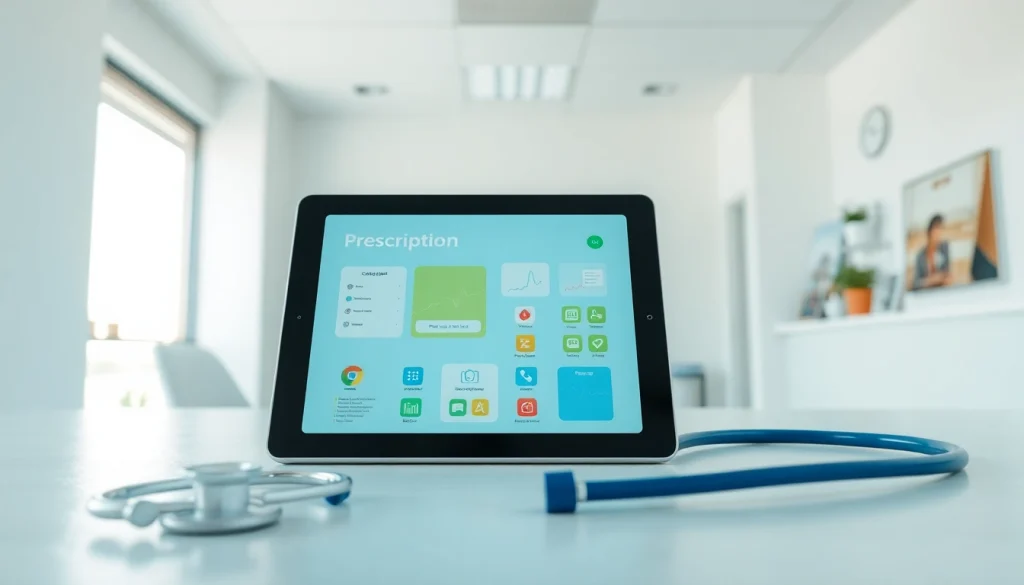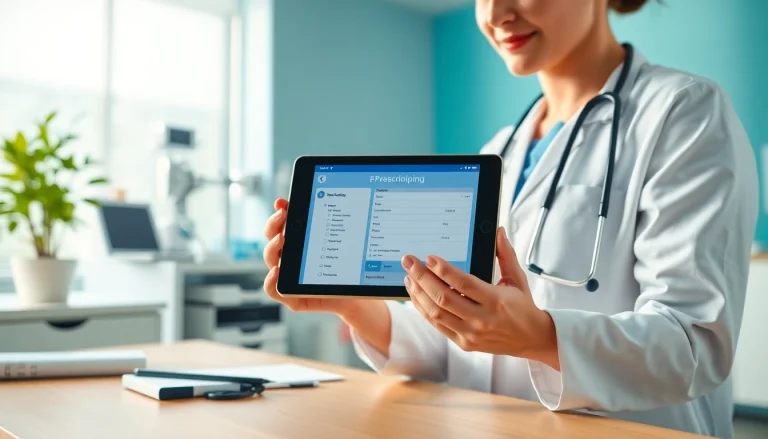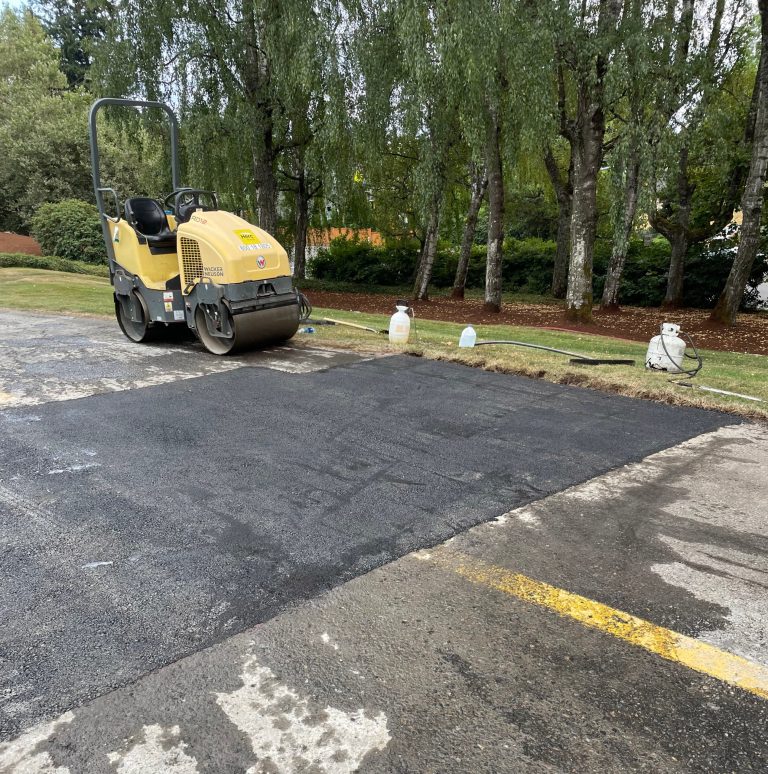
Understanding Top Rated Prescription Applications
Defining Top Rated Prescription Applications
In an increasingly digital healthcare environment, top rated prescription applications have emerged as essential tools for patients and healthcare providers alike. These applications serve various purposes, including allowing users to manage prescriptions, communicate with healthcare providers, and access medical information conveniently. By leveraging technology, they aim to enhance medication adherence and streamline the prescription process.
The Importance of User Ratings in App Selection
User ratings play a pivotal role in the selection of prescription applications. High user ratings typically indicate user satisfaction and reliability of the app’s features. When selecting an application, prospective users should prioritize those that have garnered positive feedback from real users. This feedback often encompasses usability, functionality, and overall effectiveness in addressing users’ needs.
Key Features to Look For
When evaluating top-rated prescription applications, several key features stand out:
- Medication Management: The ability to manage prescriptions, schedule refills, and receive reminders is essential for maintaining adherence to medication regimens.
- Doctor Communication: Integrated messaging or telehealth features allow users to communicate with healthcare providers, ensuring clarity regarding their prescriptions and treatment plans.
- Information Access: The application should provide easy access to drug information, potential side effects, and interactions, empowering users to make informed decisions about their medications.
- User-Friendly Interface: A straightforward and intuitive design enhances usability, making it accessible for individuals of all tech-savviness levels.
Benefits of Using Top Rated Prescription Applications
Improved Medication Adherence
One of the primary advantages of utilizing top-rated prescription applications is the improvement in medication adherence. Studies have shown that reminders and scheduled notifications can significantly enhance a patient’s consistency in taking prescribed medications. For individuals managing chronic conditions, these apps can be lifesaving, ensuring that dosages are taken on time and preventing potential health complications associated with missed doses.
Enhanced Communication with Healthcare Providers
The integration of communication tools within prescription applications fosters a stronger relationship between patients and healthcare providers. Users can directly message their doctors with questions, share updates about their conditions, or discuss concerns regarding their medications. This continuous dialogue promotes better health outcomes and allows for timely adjustments to treatment plans based on user feedback.
Streamlined Prescription Management Process
Managing prescriptions can often become cumbersome, especially for patients who take multiple medications simultaneously. Top-rated prescription applications streamline this process by consolidating all relevant information in one easily accessible place. Users can track refill dates, set reminders for taking medications, and manage interactions between different prescribed drugs. This not only simplifies the user experience but also improves overall medication safety.
How to Choose the Right Top Rated Prescription Applications
Assessing User Reviews and Testimonials
User reviews are invaluable when selecting the right prescription application. Potential users should seek apps with a solid track record of positive testimonials. These reviews often highlight specific strengths and weaknesses, providing insight that can shape decision-making. Understanding the user experience can help prospective users anticipate their own satisfaction with an application.
Evaluating App Functionality and Usability
Beyond user ratings, evaluating the functionality and usability of a prescription application plays a critical role in the decision-making process. Users should be aware of how well the app performs various tasks, such as checking for medication interactions or setting alerts for renewals. Moreover, an intuitive user interface is crucial, as a complex design can deter users from fully utilizing the app’s capabilities.
Comparing Pricing and Available Services
Pricing can also influence the choice of a prescription application. While many apps are free, some may offer premium features at a cost. Users should investigate what each app offers for free versus what is behind a paywall. Comparing services available within the applications ensures that users find an option that meets their needs without overspending on unnecessary features.
Common Challenges with Top Rated Prescription Applications
Technical Issues and App Reliability
Despite their benefits, users may encounter technical issues with prescription applications, such as crashes, slow loading times, or bugs that hinder functionality. Reliability is crucial, as users depend on these applications for managing their health. Developers must ensure regular updates and maintenance to provide a smooth user experience and minimize disruptions.
User Privacy and Data Security Concerns
When dealing with medical information, privacy and data security are paramount. Users must trust that their personal health information and prescription details are safeguarded against breaches. Choosing applications that comply with HIPAA (Health Insurance Portability and Accountability Act) regulations can help assuage these concerns, providing users with assurance that their data is treated securely.
Overcoming the Learning Curve for New Users
New users may face a learning curve when navigating prescription applications. An app that seems beneficial in theory can become a source of frustration if users struggle to utilize its features effectively. Developers should prioritize intuitive designs and provide ample resources, such as tutorials or customer support, to facilitate onboarding processes and boost user confidence.
Future Trends in Top Rated Prescription Applications
Integration with Telehealth Services
As healthcare continues to embrace telehealth, top-rated prescription applications are likely to integrate these services more fully. This evolution will allow users to consult with healthcare professionals directly through the app, creating a seamless experience that encompasses not just medication management but also virtual check-ups, prescription renewals, and consultations.
Increased Personalization and AI Features
Artificial intelligence will play a more significant role in the evolution of prescription applications. Industries are increasingly shifting towards personalized medicine, and apps that leverage AI could deliver customizable medication reminders based on users’ schedules, preferences, and health conditions. Future apps may also offer predictive analytics to identify potential health issues based on medication adherence patterns.
Expanding Accessibility for Diverse Populations
Accessibility is an important consideration in healthcare technology. Future top-rated prescription applications should focus on inclusivity, ensuring that they accommodate users from diverse backgrounds, including different languages, disabilities, and age groups. This focus will further enhance user uptake and facilitate broader access to necessary medical resources.






